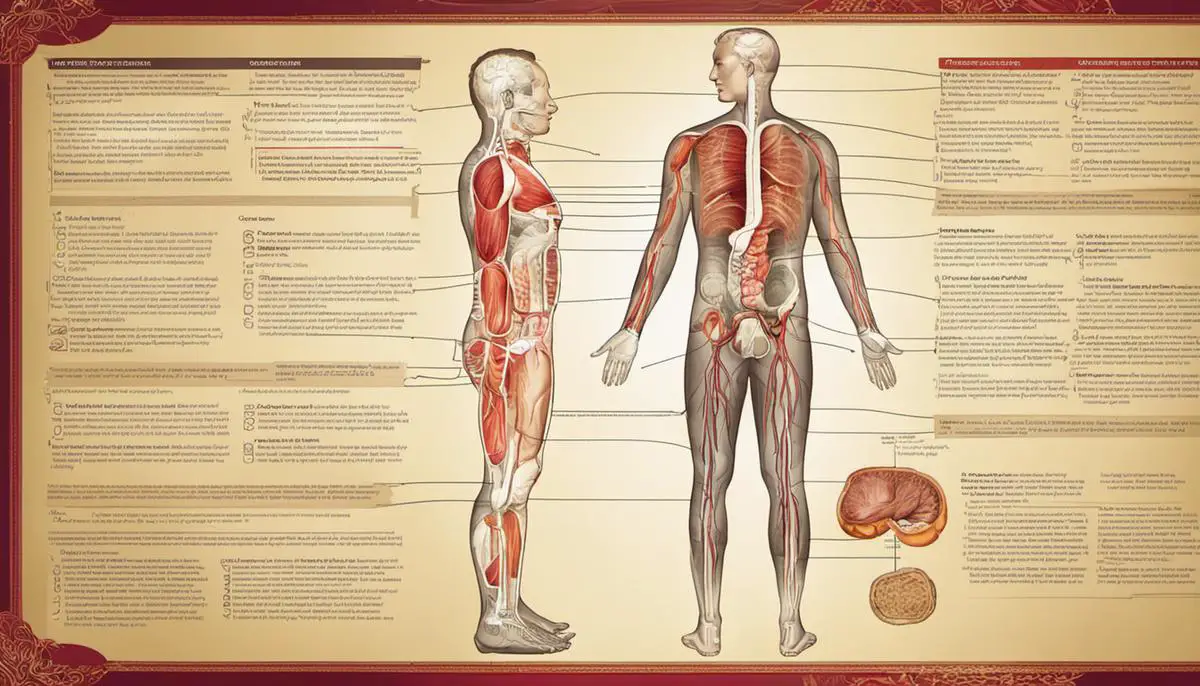Abdominal massage, a practice that traces its roots back to ancient civilizations, has evolved over time into a recognized form of complementary and alternative medicine. From enhancing digestion to promoting relaxation, the benefits of abdominal massage are diverse and firmly backed by scientific evidence. This enlightening discourse delves into the well-rounded understanding of abdominal massage, its numerous health benefits, prospective users, potential risks, and tips on incorporating it into regular routines. Imbued with an insightful blend of history, science, practical guidelines, and cautionary advice, it serves as a comprehensive guide for anyone interested in exploring the therapeutic potential of abdominal massage.
Understanding Abdominal Massage
Understanding Abdominal Massage: An Overview
Abdominal massage, also known as stomach or belly massage, is a non-invasive therapeutic practice that involves applying gentle pressure to the abdomen area. Its roots trace back to various world cultures, including ancient Chinese and Indian traditions, where it was considered essential for maintaining overall health and wellness.
Over the centuries, abdominal massage has evolved and been incorporated into both Eastern and Western therapeutic practices. It typically involves various techniques such as kneading, circular rubbing, pressing, and stroking to stimulate the organs in the abdominal region.
The Process of Abdominal Massage
In a typical abdominal massage session, the practitioner initially makes the individual comfortable by laying them down in a peaceful environment. The therapist then applies gentle but firm pressure on the stomach, using a combination of techniques to stimulate the abdominal region.
Carl Chi, a popular Chinese medical text dating back to the Ming Dynasty, specifies that the massage should follow the flow of Qi, or life force, in the abdomen. This means following the movement of the digestive tract, moving in a clockwise direction for the entire massage.
The duration of an abdominal massage session can vary, depending on individual needs and the specific techniques being employed. The frequency of sessions is also dependent on personal requirements and can range from daily to weekly, or even less frequently.
Abdominal Massage and Digestion
One of the most recognized benefits of abdominal massage is its positive impact on digestion. The gentle pressure applied during the massage can stimulate the internal organs, particularly those involved in the digestive process, leading to improved digestion.
Stretching and kneading the abdominal region can help increase blood and oxygen flow to the digestive organs, enhancing their function and aiding in the digestion and absorption of nutrients. Additionally, it can also help stimulate the movement of waste products through the system, assisting in regular and healthy bowel movements.
Promoting Emotional Well-being Through Abdominal Massage
Apart from its physical benefits, abdominal massage can also contribute to emotional well-being. According to Traditional Chinese Medicine (TCM), the gut is associated with emotions. Therefore, nurturing the gut through massage can help release accumulated stress and emotional blockages.
During abdominal massage, vagus nerve stimulation also takes place. The vagus nerve is a major component of the body’s parasympathetic nervous system which is associated with relaxation responses. By stimulating this nerve, the procedure can lead to increased levels of well-being and reduced stress.
Abdominal Massage and Women’s Health
Abdominal massage can also provide significant benefits specifically for women’s health. It’s often used to alleviate menstrual discomfort by helping to regulate both the menstrual cycle and alleviate cramps, due to increased circulation and the release of endorphins, the body’s natural painkillers.
Moreover, for those women trying to conceive, abdominal massage is used to enhance fertility. By increasing blood flow to the uterus and ovaries, it can help boost reproductive health.
Implementing abdominal massage in your routine can contribute significantly to your well-being in various ways. It enhances digestive health, fosters emotional wellness, and aids in women’s reproductive health. The practice can, therefore, yield an array of advantages worthy of consideration and exploration.

Health Benefits of Abdominal Massage
Discovering the Digestive Perks of Abdominal Massage
Scientists have discovered that incorporating abdominal massages into your lifestyle may supercharge your digestive system. The gentle kneading encourages peristalsis- a natural body process where the intestines contract in rhythm to promote healthy bowel movements. A report in the International Journal of Nursing Studies identifies abdominal massages as a successful method to curb constipation and notably increase the regularity of bowel movements.
This massage technique also offers relief for other stomach-related concerns like gastritis, bloating, and indigestion. Simplifying the process, abdominal massage basically propels your digestive organs to perform effectively. This culminates in an expedited waste removal process and improved nutrient absorption, thereby enhancing the overall health of your digestive system.
Respiratory Advantages of Abdominal Massage
Abdominal massage also has respiratory benefits. Deep, massage-induced breathing helps to increase oxygen flow, vital for all body functionalities. By strengthening the diaphragm, the primary muscle involved in breathing, these massages can enhance lung capacity and efficiency. A study in the Journal of Bodywork and Movement Therapies found that diaphragmatic breathing significantly improved pulmonary functions among study subjects.
Abdominal Massages for Healthy Skin
Aside from improving internal bodily functions, abdominal massage also benefits the exterior – skin health. The physical action of massage enhances blood circulation to the skin. Improved circulation delivers more oxygen and nutrients to the skin cells, promoting their function and renewal.
According to a study in Dermatology Research and Practice, massage can also stimulating lymphatic drainage, helping to eliminate toxins and reduce fluid retention. All these actions contribute to healthier, more nourished, and glowing skin.
Stimulating Physical and Mental Relaxation
Abdominal massage goes beyond physical benefits – it holds considerable potential for psychological well-being. The soothing touch of a massage can stimulate the release of endorphins, the body’s natural ‘feel-good’ hormones, creating a sense of relaxation and stress relief.
The British Medical Journal reported on a study where abdominal massage helped significantly reduce anxiety and improve the well-being of patients with chronic constipation. The direct physical stimulation, coupled with the serene environment, helps to lower cortisol (a stress hormone) levels, promoting a sense of peace and relaxation, fostering mental and emotional health.
An Examination of the Benefits of Abdominal Massage Based on Scientific Evidence
Abdominal massages have been substantiated by numerous scientific studies for their diverse health benefits. For instance, an investigation featured in the Journal of Alternative and Complementary Medicine disclosed that patients with Parkinson’s disease experienced improved constipation symptoms and enhanced quality of life following abdominal massage. Furthermore, a study in the Journal of Clinical Nursing highlighted reduced gastric residual volume and discomfort in critically ill patients through abdominal massage.
Another report published in the Journal of Korean Academy of Nursing discovered that abdominal meridian massages notably mitigate menstrual pain and irregularity among female high school students. Such investigations alongside many others present compelling evidence affirming the broad health improvements offered by abdominal massages.

Who can benefit from an Abdominal Massage
User Groups Who Are Likely to Benefit From Abdominal Massage
Abdominal massages excel as a potent supplemental or alternative remedy for several health complications. Primarily, people grappling with digestive disorders or respiratory ailments can gain significantly from this therapeutic modality. For example, those suffering from irritable bowel syndrome (IBS) can find relief through abdominal massages, which encourage regular bowel movements and alleviate symptom severity.
Regarding respiratory issues, individuals living with chronic obstructive pulmonary disease (COPD) can benefit from abdominal massages. The practice has the potential to fortify the diaphragm muscles, leading to improved lung functionality and facilitated breathing.
Beyond physical ailments, abdominal massages are lauded for their potential to reduce anxiety. By fostering relaxation in the stomach muscles, these massages can temper feelings of tension and stress. Consequently, those managing anxiety disorders may discover that consistent abdominal massages contribute to symptom management and bolster overall emotional health.
Another demographic that can benefit from abdominal massages is women dealing with menstrual discomfort. Regular sessions can help minimize the pain associated with menstruation, potentially leading to decreased bleeding.
When Is Abdominal Massage Not Recommended?
While the positive attributes of abdominal massages are noteworthy, they are not universally endorsed as a treatment strategy. Specific groups should be cautious and eschew this form of massage due to associated risks.
For instance, expectant mothers are generally discouraged from pursuing abdominal massages. The apprehension is predicated on the possibility of instigating contractions or disrupting the blood circulation to the fetus. Despite the fact that mild, tender massages are often deemed safe during pregnancy, it is paramount to solicit advice from a physician or a certified prenatal massage therapist before proceeding.
Moreover, those suffering from health complications such as blood clot issues (Deep Vein Thrombosis), abdominal hernias, or recent abdominal surgery should circumvent abdominal massages. The force exerted during a massage can potentially displace a clot, aggravate hernia symptoms, or impede the recuperation process following surgery.
Lastly, any individual with an active infectious disease, particularly those impacting the digestive system such as hepatitis or stomach ulcers, should steer clear of abdominal massages. Forceful manipulation of the abdominal region could potentially disseminate infection, doing more damage than good.
In every scenario, advice from a proficient healthcare provider should be sought prior to integrating abdominal massages into a self-care routine. Despite the potential rewards, it’s crucial to assure that the prospective massage is both safe and efficient for the individual’s distinct health concerns and requirements.

How to Incorporate Abdominal Massage in Your Routine
Incorporating Abdominal Massage into Your Self-Care Regimen
The practice of abdominal massage, despite its immense value, is frequently overlooked in the realm of wellness and health maintenance. Conventional massage techniques primarily focus on the upper body, but abdominal massage introduces unique advantages that bear a direct influence on digestive, reproductive, and urinary systems. Recognizing these advantages, the integration of abdominal massage into your daily or weekly self-care habits could significantly enhance your overall well-being.
Steps for Performing Self-Abdominal Massage
Performing self-abdominal massage is not as complex as it may seem. Ensure your hands are warm before you start to promote increased blood flow and relaxation. Beginning just above your hip bones, apply mild pressure and slowly make clockwise circles around your navel, gradually extending outward. This method helps move waste products through your intestines. Repeat this motion for about five minutes or until you feel relief.
Best Time for Abdominal Massage
The optimal time for abdominal massage widely depends on individual comfort and convenience. However, one good practice is to perform it either before a meal or at least one hour after eating. This timing prevents discomfort and promotes better digestion before or after a meal. Moreover, incorporating it into your bedtime routine can aid sleep by inducing relaxation and alleviating stress.
Duration of An Abdominal Massage Session
A standard abdominal massage session can range between five to twenty minutes depending on the individual’s comfort level or urgency of need. It’s vital to listen to your body’s response and to not force a long session if it feels uncomfortable. As you gradually incorporate abdominal massage into your routine, you might find that you can handle longer sessions.
Useful Tools for Abdominal Massage
While your hands are your primary tools for abdominal massage, various other tools can be used to enhance the process. Massage balls or foam rollers can provide additional pressure and aid in breaking up any knots or tension. Moreover, massage oils like lavender or chamomile can invigorate your senses while the oil aids gliding, ensuring the massage is smooth and comfortable.
Health Advantages of Abdominal Massage
Aside from improving digestion and treating constipation, abdominal massage benefits are extensive. It promotes circulation in your abdomen, which can aid in detoxification and can also ease muscle tension. In addition, it can alleviate menstrual pain for women and help support fertility. Regularly performed, it can assist in weight loss by stimulating gut mobility and aiding in the elimination of waste. For overall health optimization and balance, consider including abdominal massage in your wellness schedule.

By now, the light has been shed on the importance and benefits of abdominal massage, not only as practice rooted in ancient wisdom, but one proven by modern science. The considerable health advantages such as promoting digestive health, stimulating physiological relaxation, and enhancing respiratory function are just a few of the relevant perks this practice holds. Moreover, important guidance has been given as to who can benefit most and who should refrain from this practice. Considering all of these, it becomes apparent that abdominal massage can be a significant addition to one’s daily or weekly health routine, providing that necessary conditions are met and suitable precautions are taken. Truly, achieving a well-rounded state of health could be as simple as adopting this remarkable stress-busting, health-enhancing practice.
